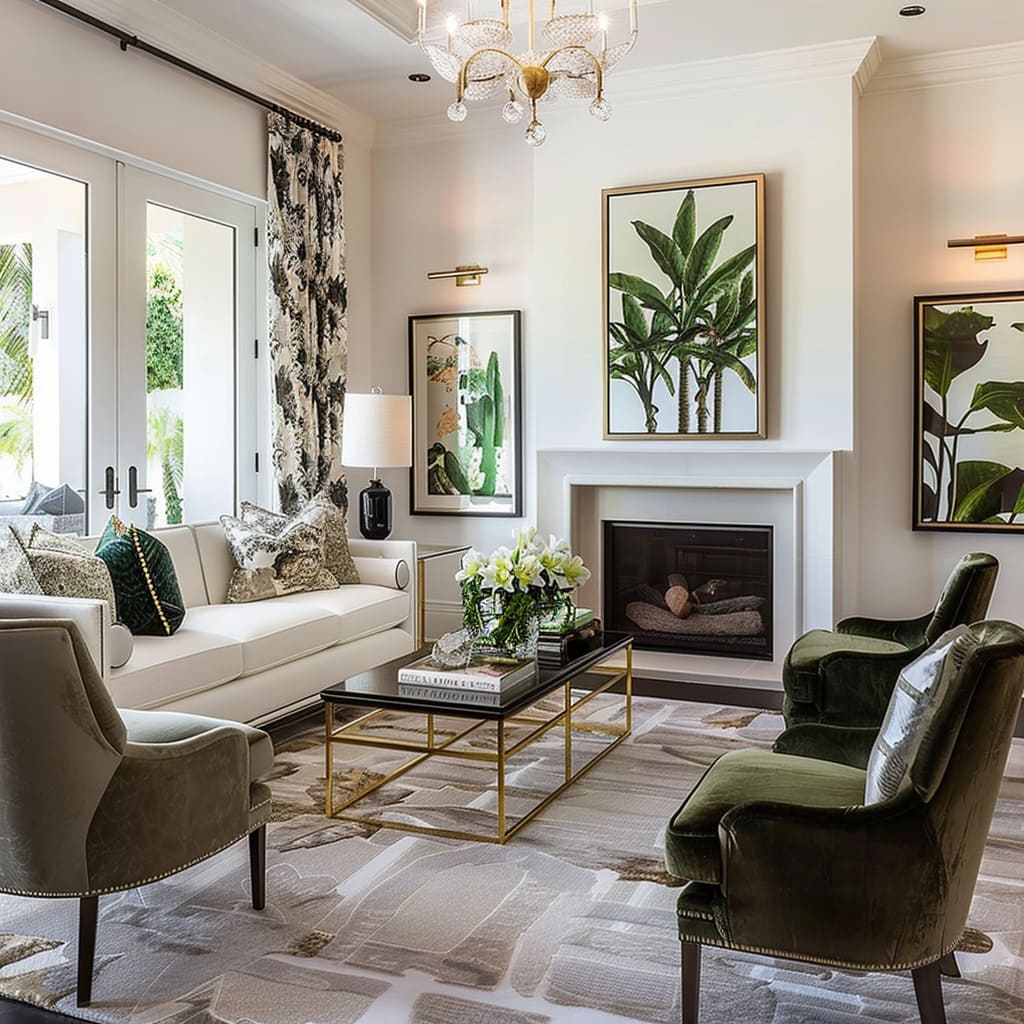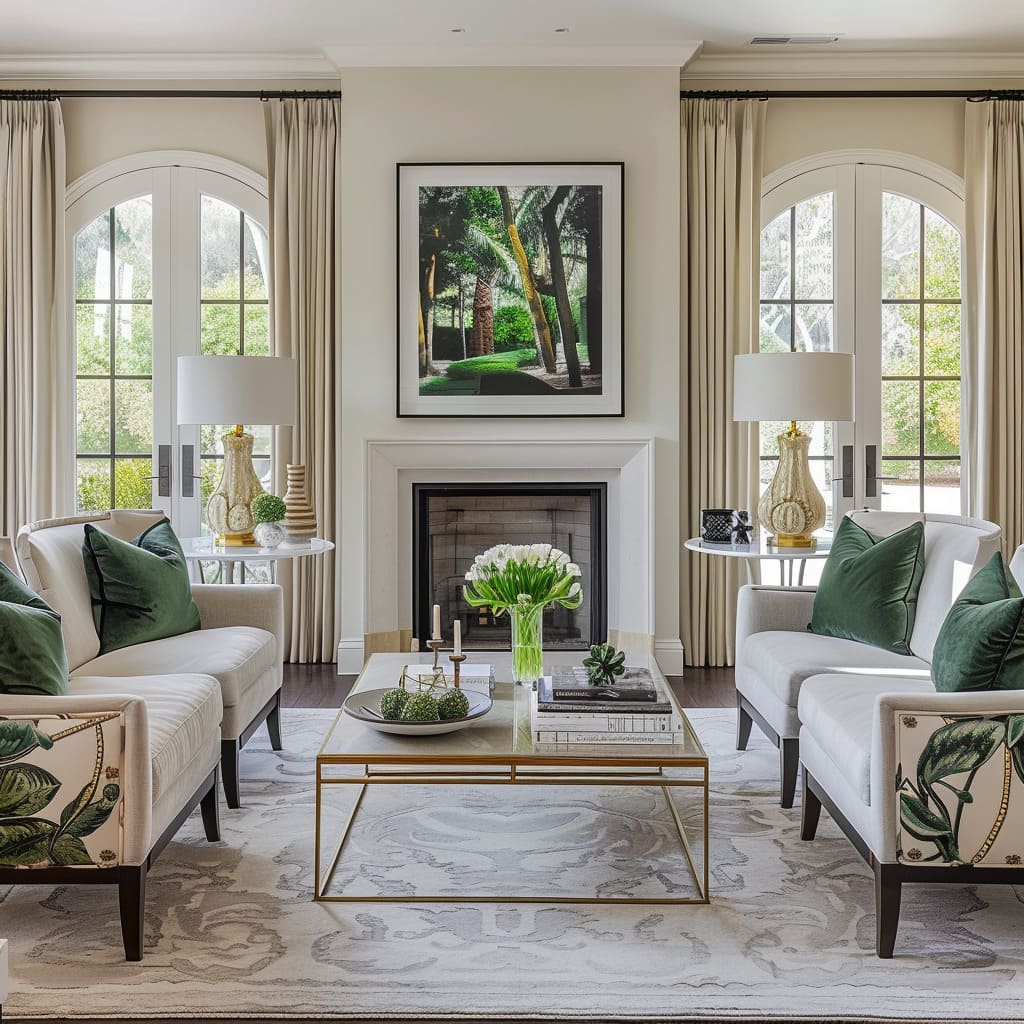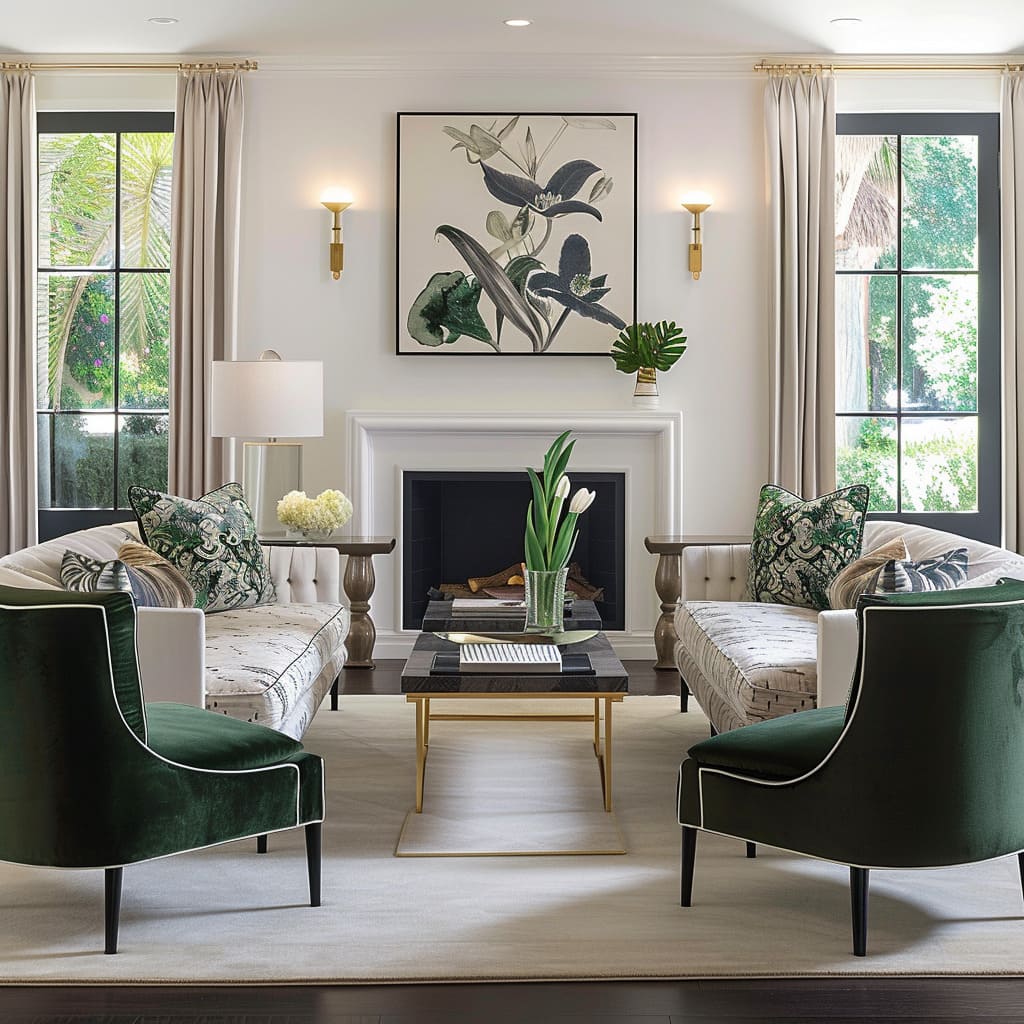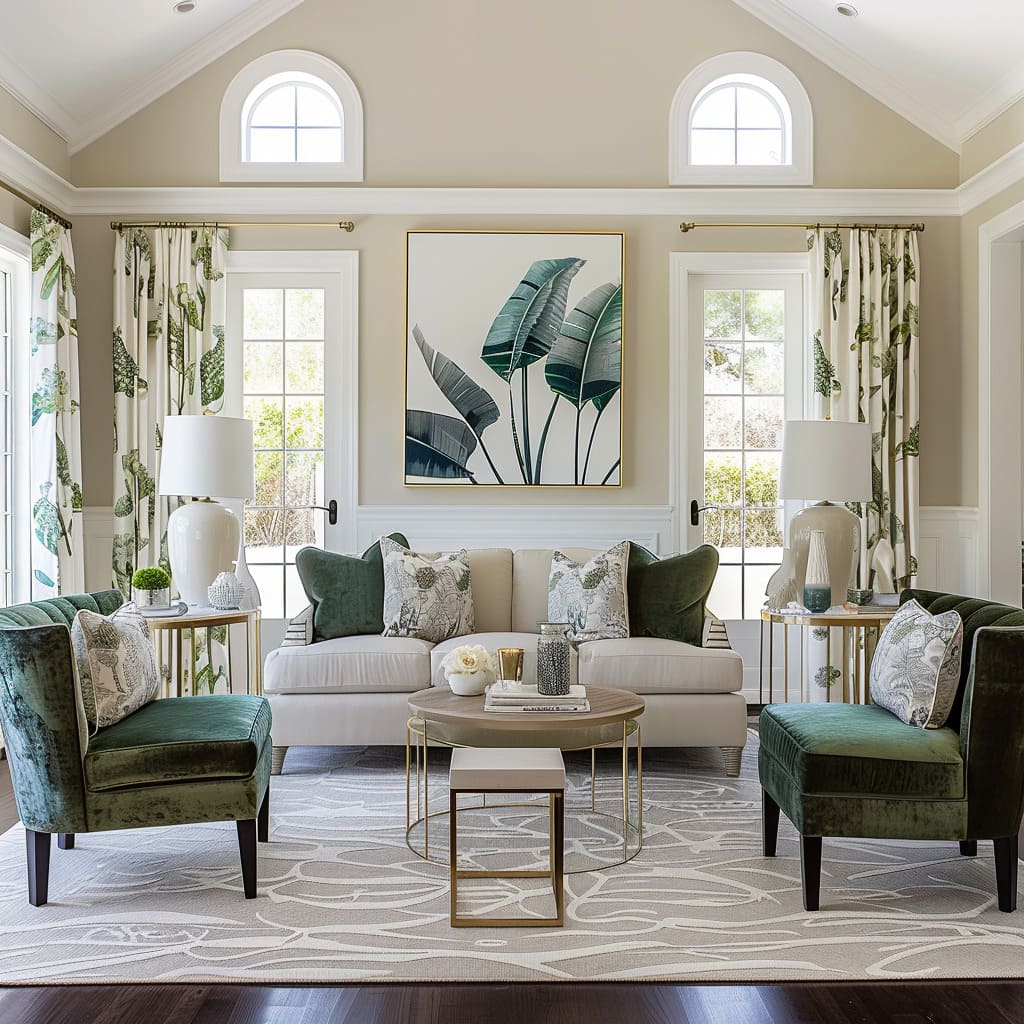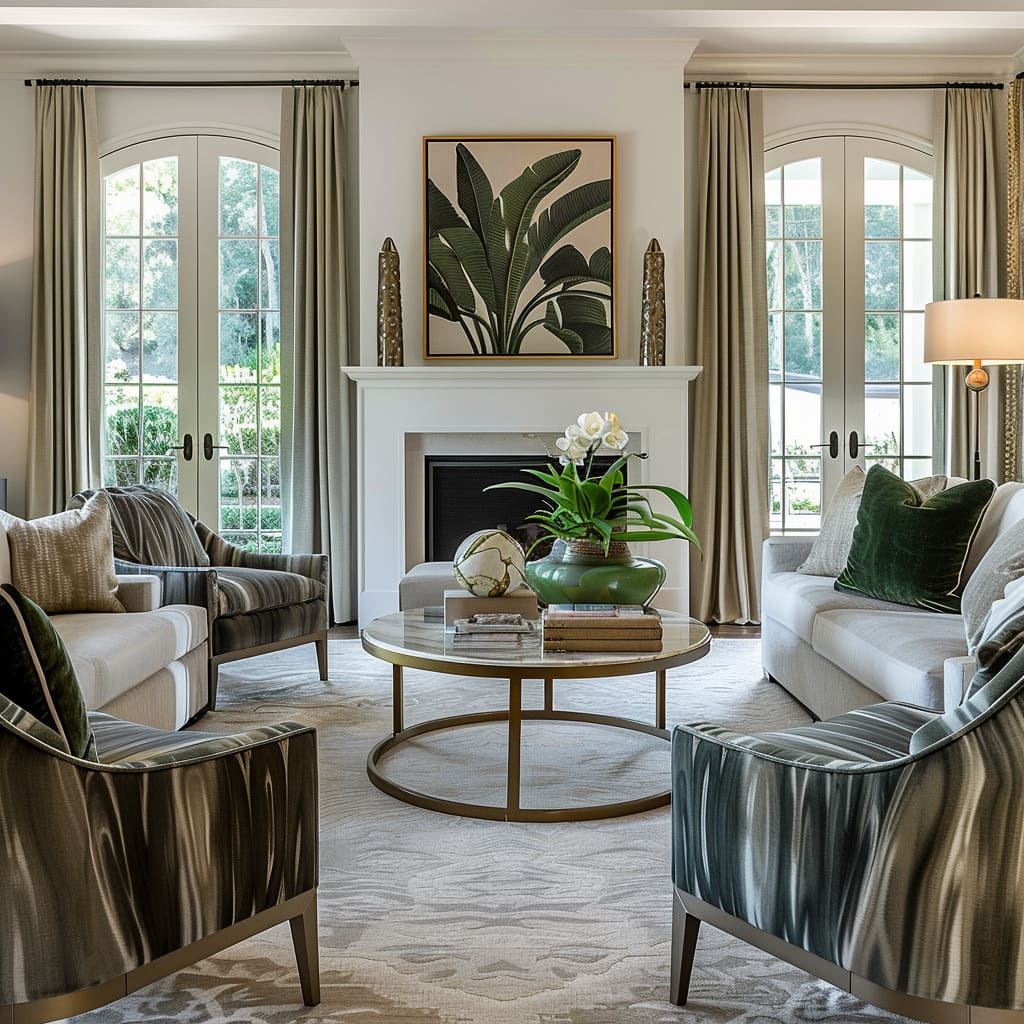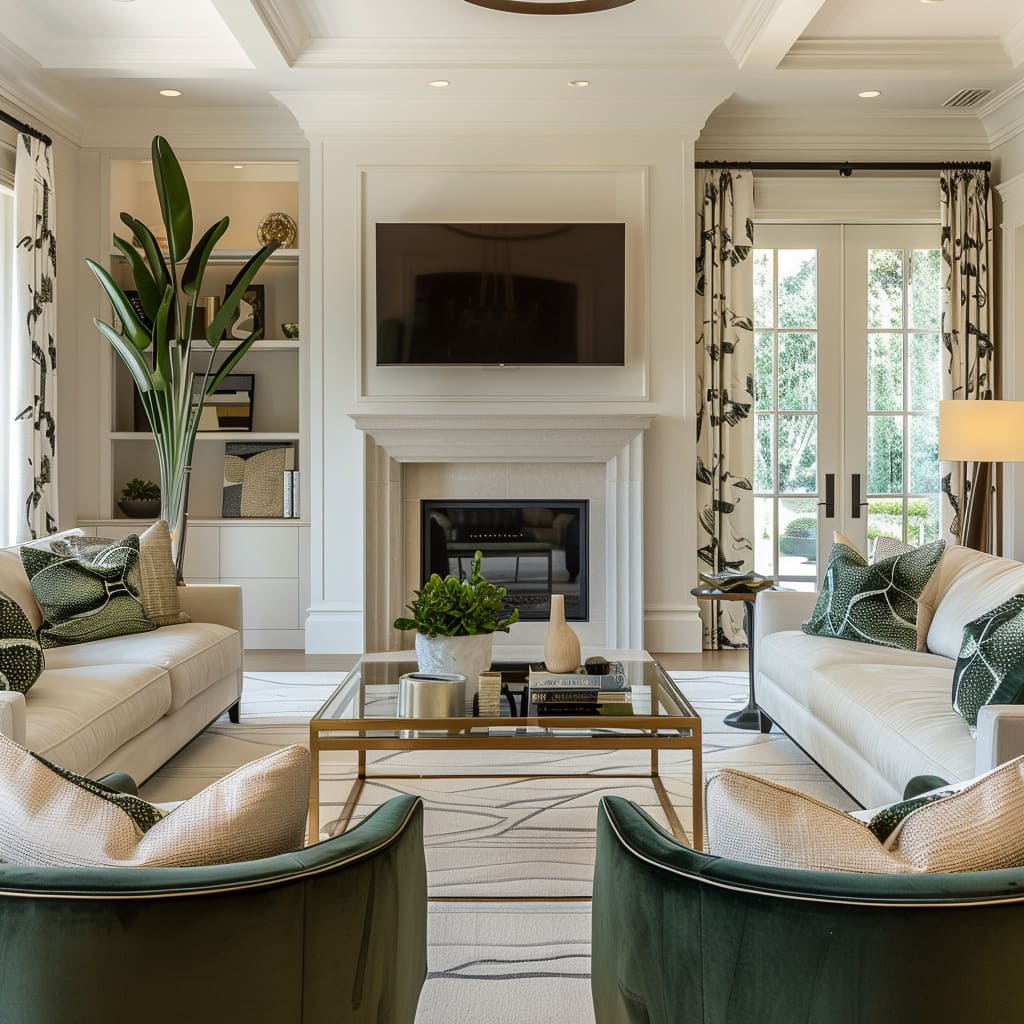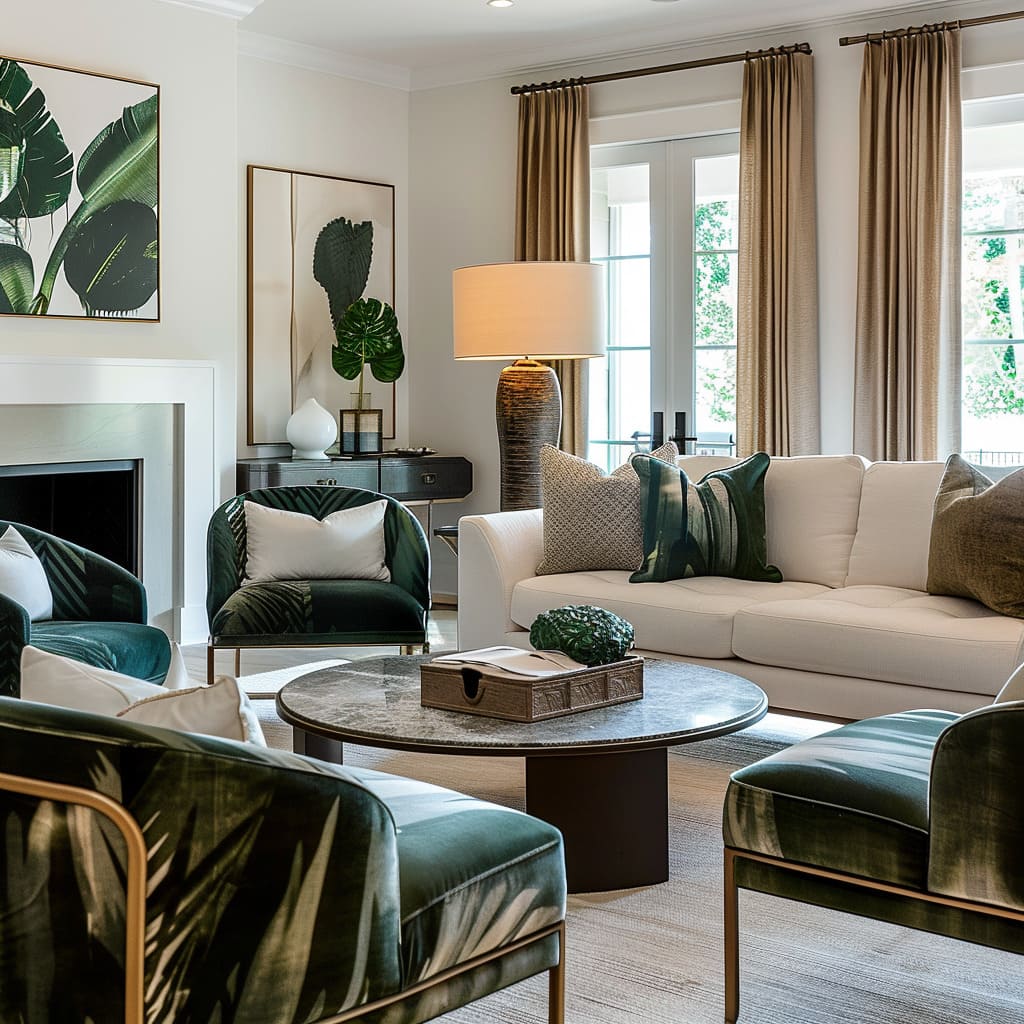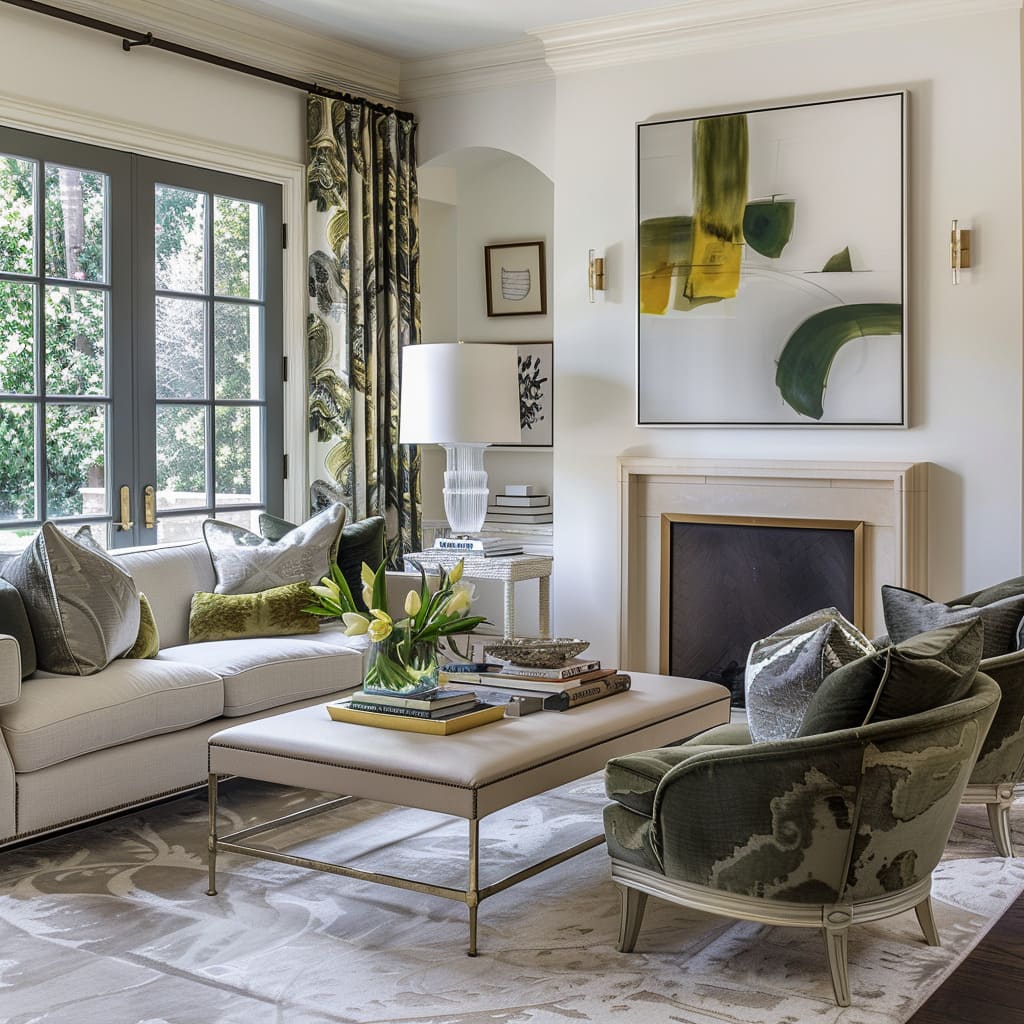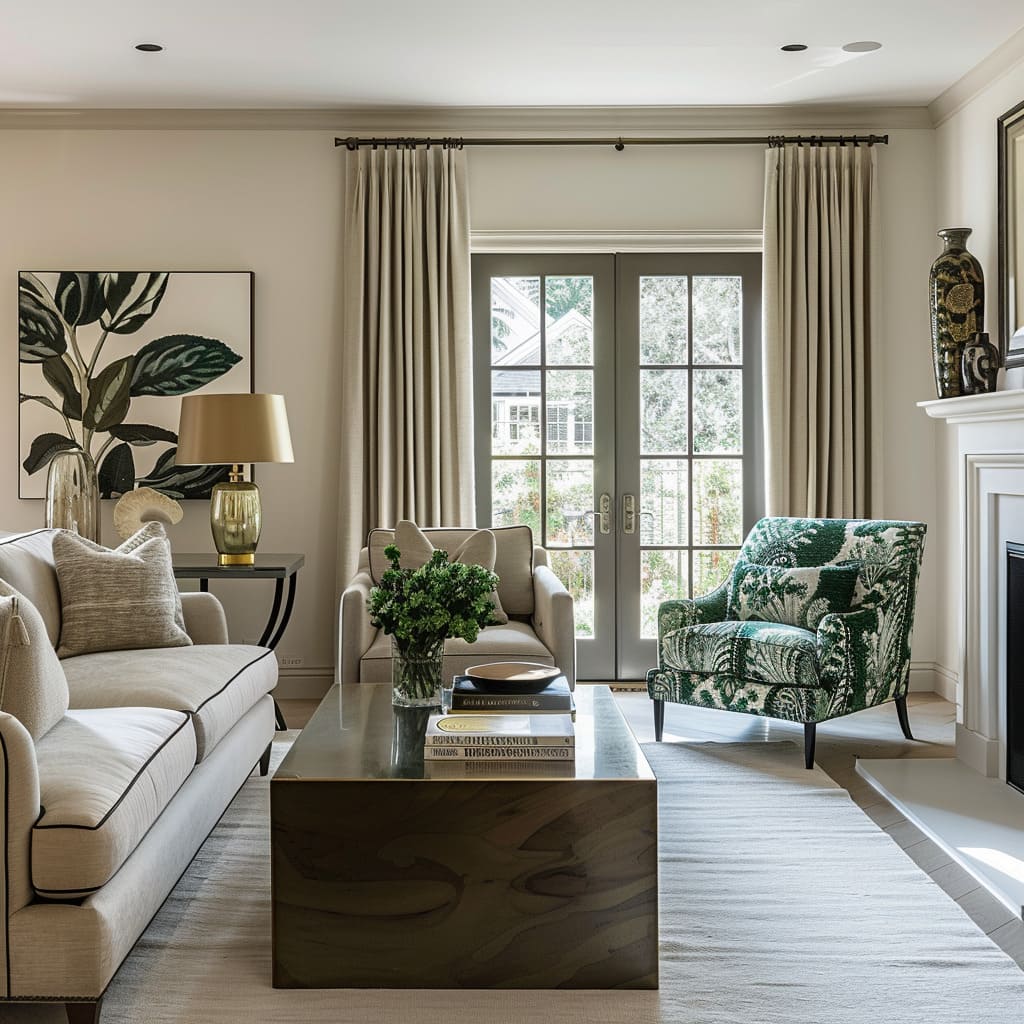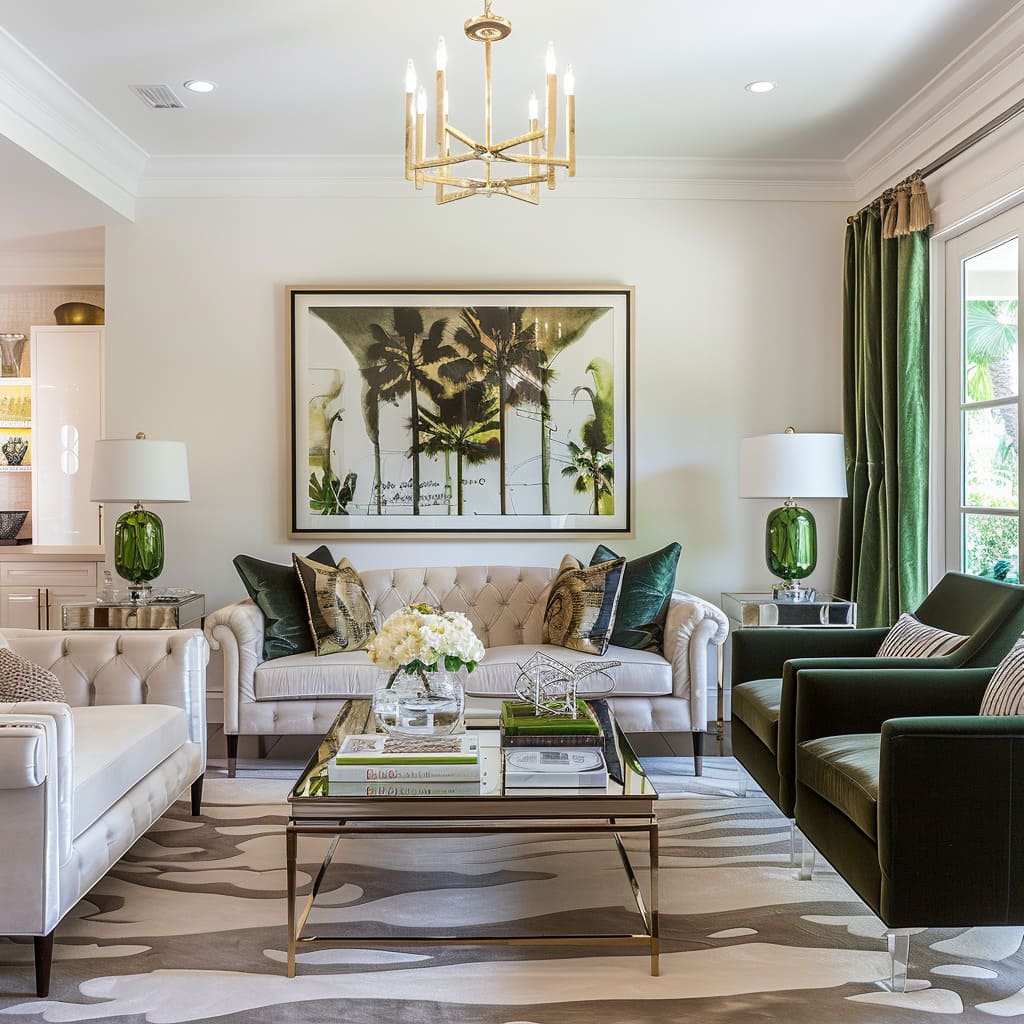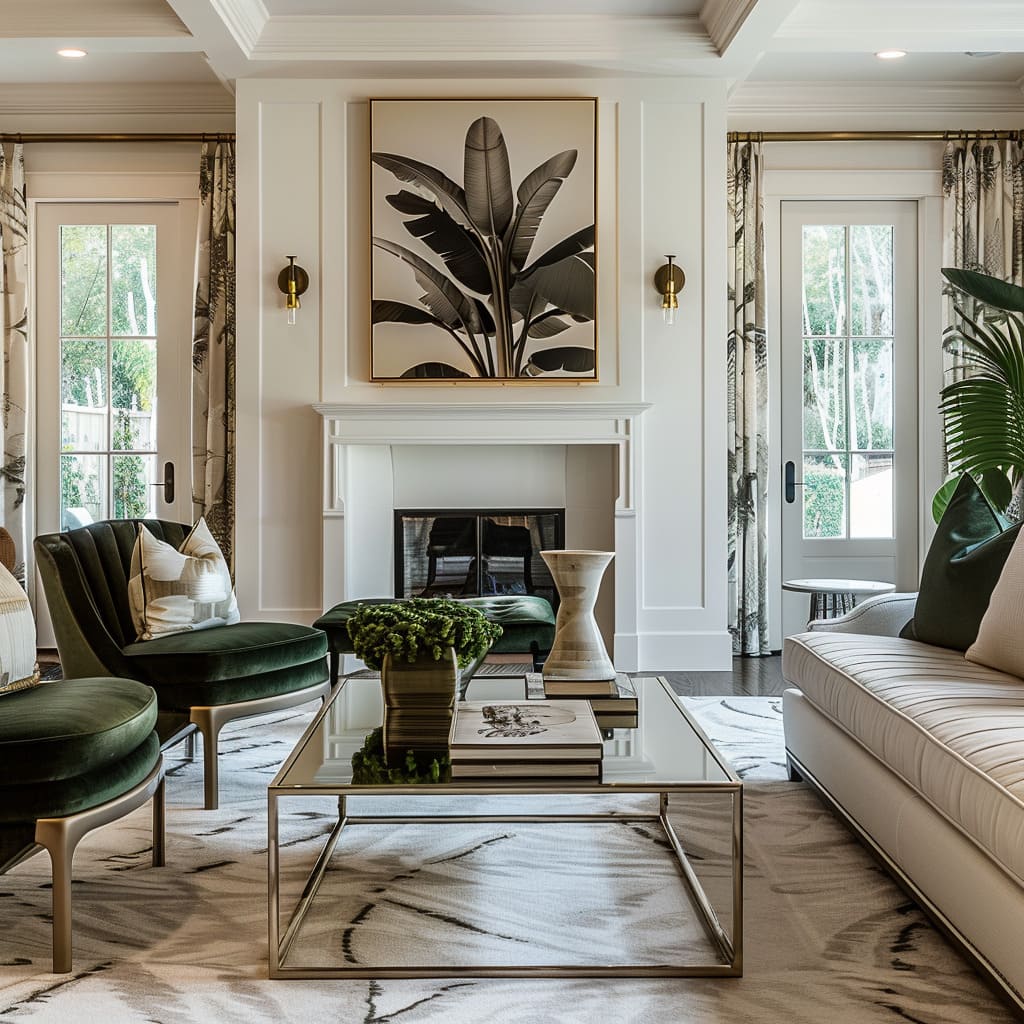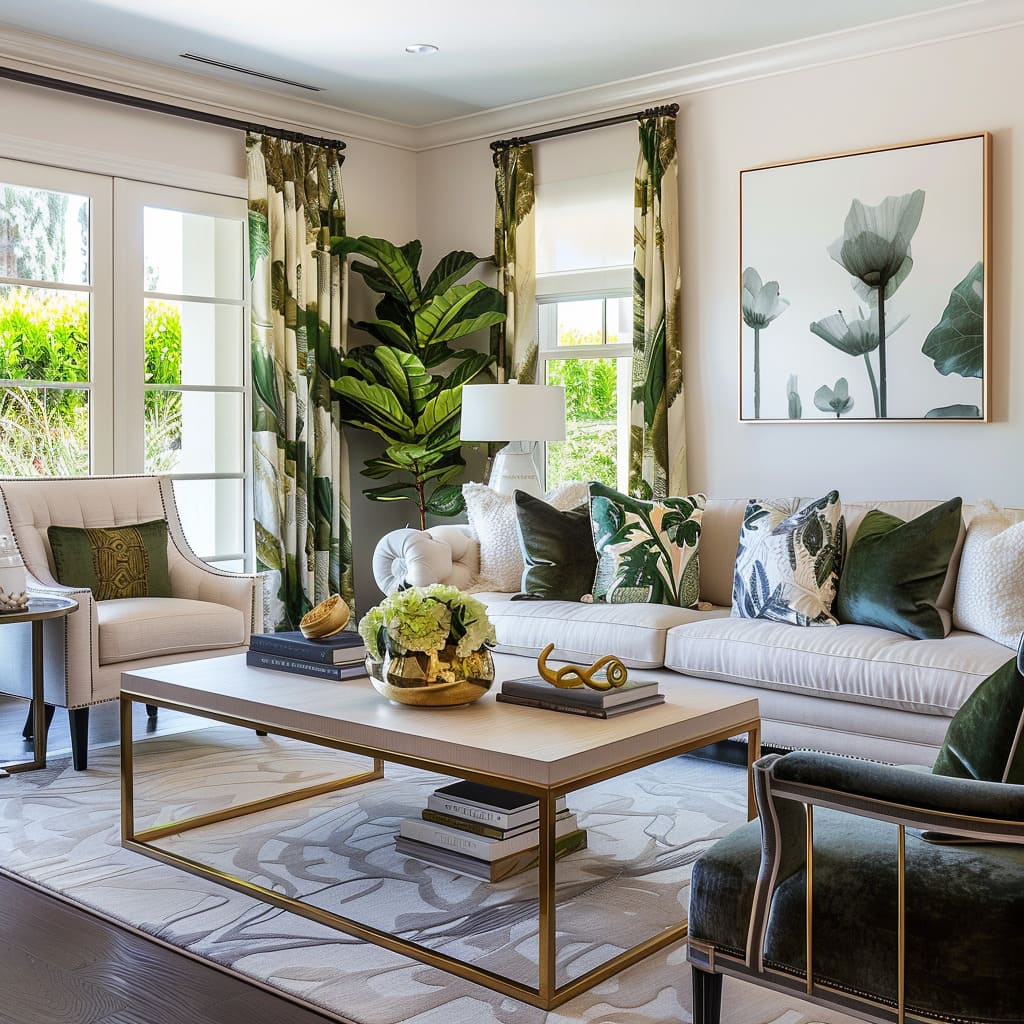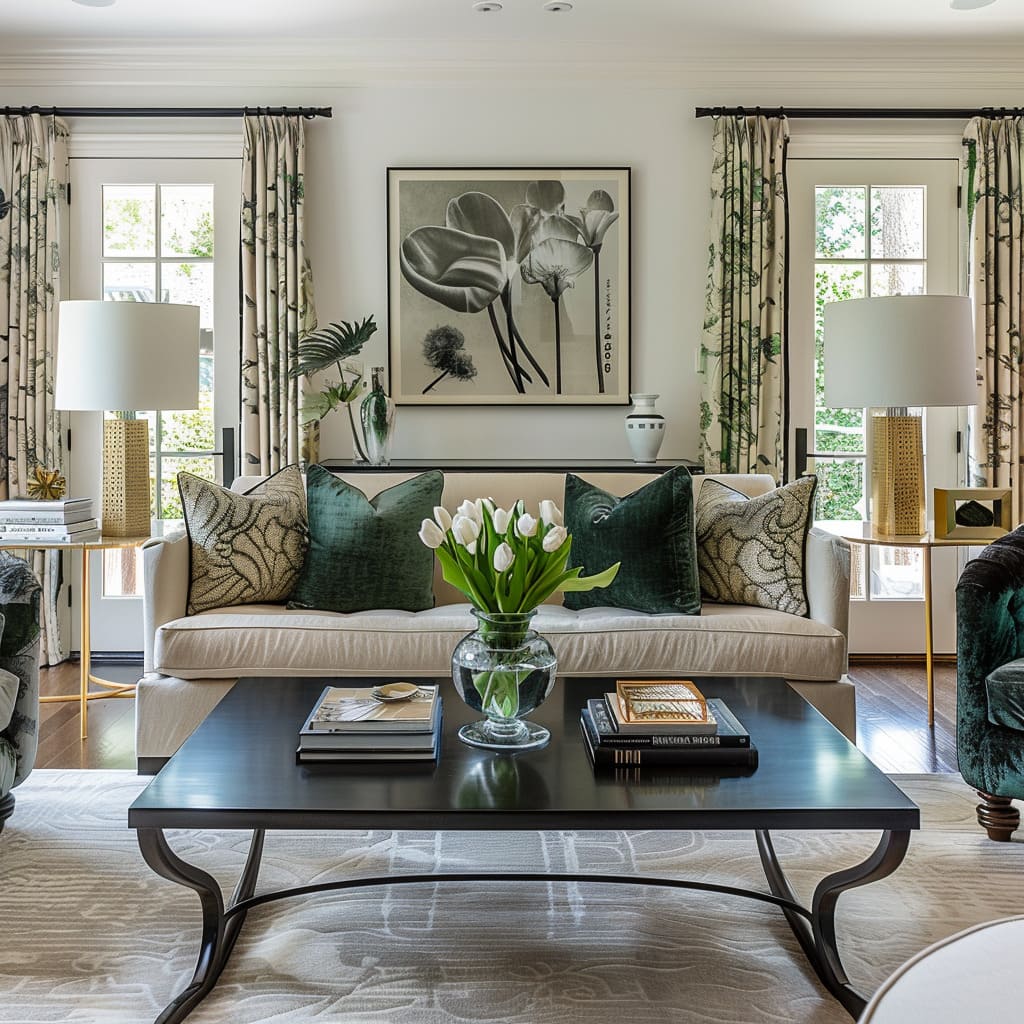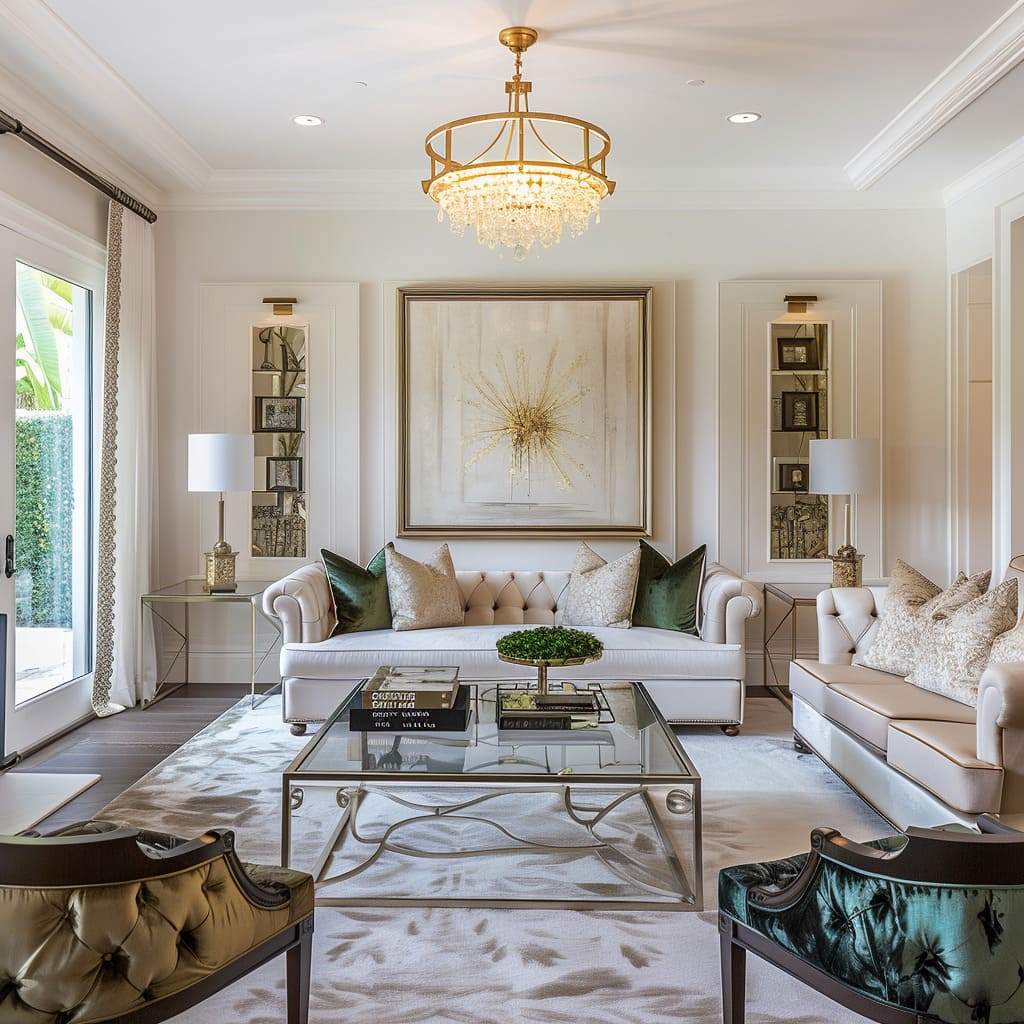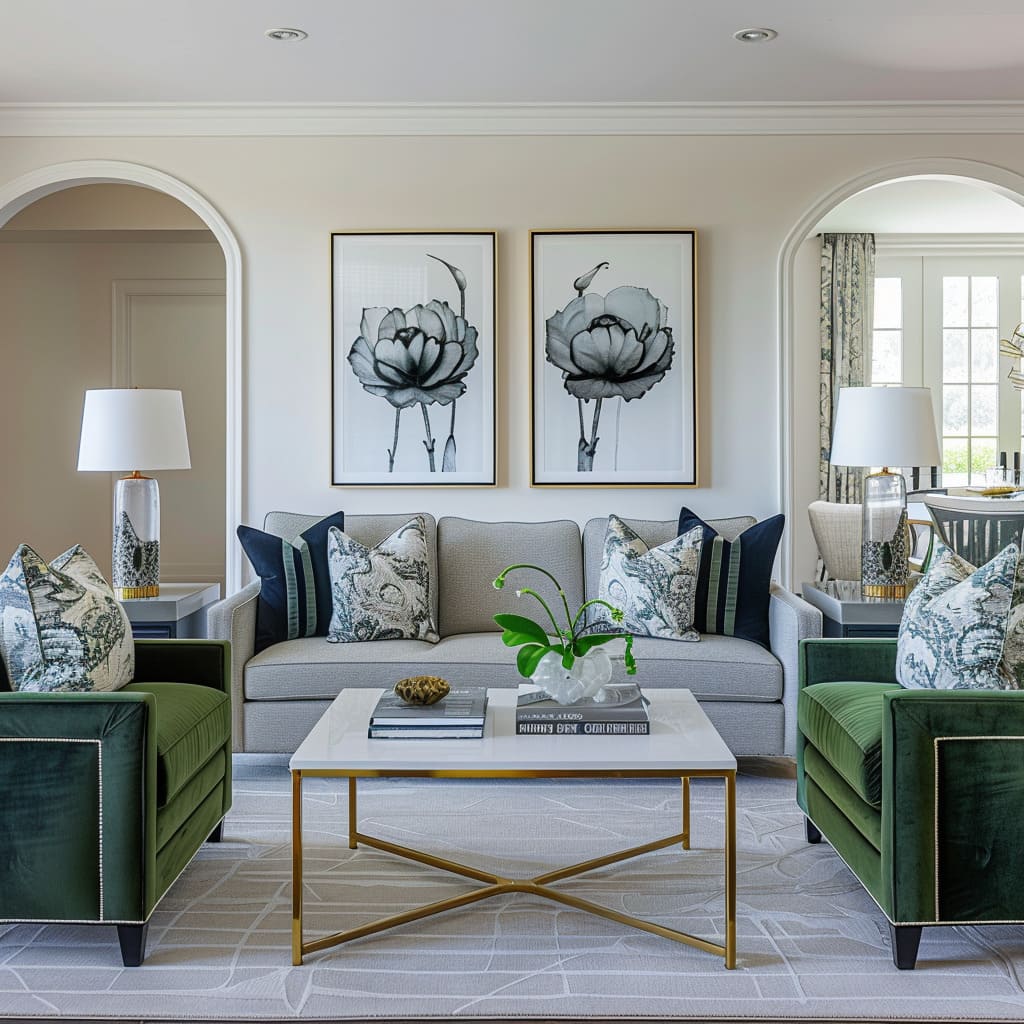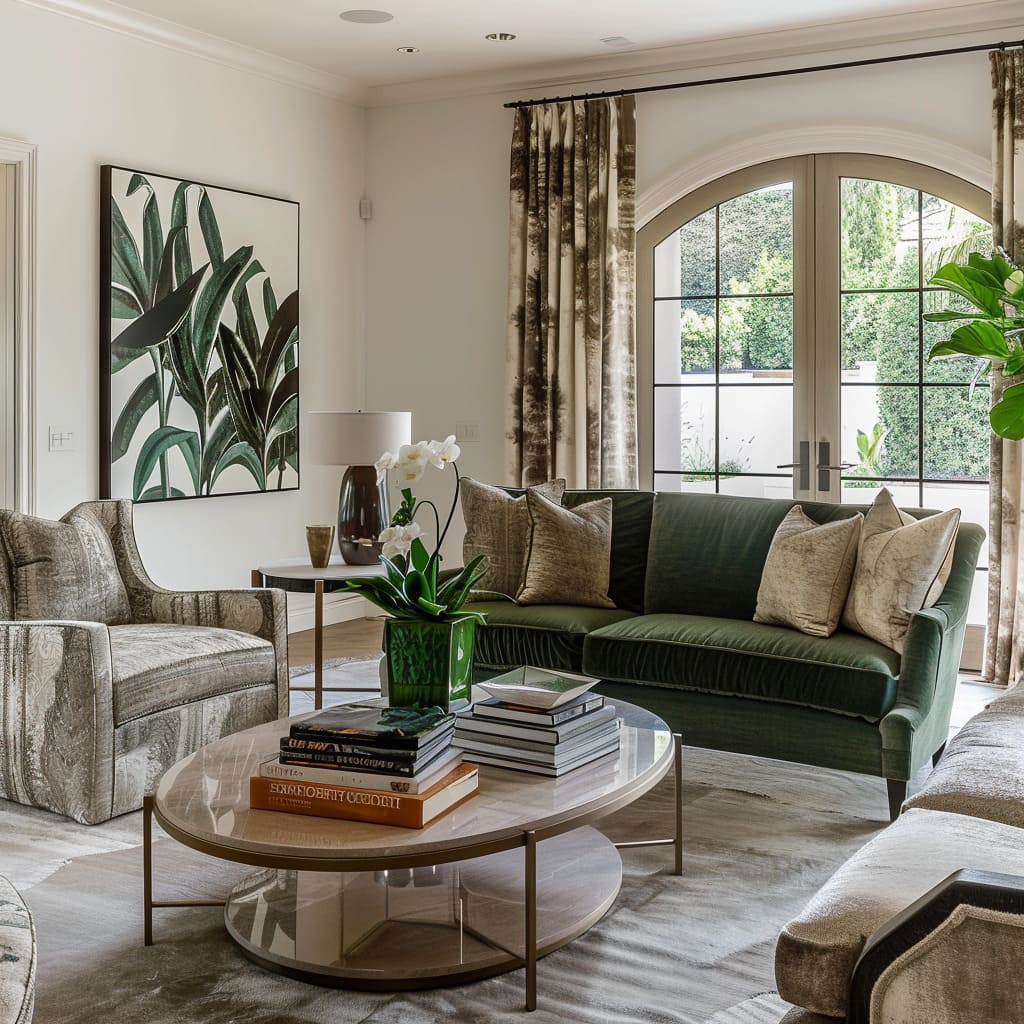The integration of floral patterns transcends mere ornamentation, embodying a multifaceted approach to enhancing aesthetic appeal, infusing spaces with symbolic depth, and crafting an environment that is both visually engaging and psychologically uplifting. This article delves into the nuanced roles that floral motifs play across various aspects of design, from their capacity to introduce visual and tactile richness to their ability to anchor a room’s decor in both personal significance and broader cultural narratives.
By exploring how these patterns interact with the principles of transitional design, we uncover the layers of complexity and meaning that florals can contribute to interior spaces, offering insights into their enduring relevance and transformative potential in contemporary design.
Aesthetic Influence and Visual Appeal
Floristic Patterns as Focal Points
Floral designs assert themselves as focal points in transitional interiors through carefully curated artwork and floral arrangements. These elements offer a visual pause in the midst of neutral tones and straight lines, inviting the gaze to a burst of natural beauty.
For instance, a large canvas depicting an up-close floral image or an ornate vase overflowing with lush greenery can anchor a room’s design, bringing the organic forms and hues of nature front and center. These focal points serve not just as mere decoration but as a dialogue between nature and human craftsmanship.
Softening Modern Lines
While transitional design often embraces a sleek and minimalist aesthetic, the addition of floral patterns introduces a complementary softness. The texture of a floral-print upholstered chair or the gentle curves of a botanical-themed decor piece provides a counterpoint to the strictness of modern lines.
This interplay manifests in these interiors, where the soft floral fabrics on throw pillows and draperies envelop the room in warmth, transforming clean and contemporary spaces into ones that invite comfort and relaxation.
Creating Harmony and Contrast
The interplay between floral motifs and other elements in the room, such as furniture and textiles, is a dance of design that either finds harmony or thrives on contrast. In the images, one can observe how floral patterns in the drapery correspond with the room’s color scheme, subtly tying together the space’s overall aesthetic.
In contrast, bold, contrasting floral designs on accent chairs can stand out against a more subdued background, adding a dynamic visual interest that energizes the space.
Texture and Depth
Floral patterns are instrumental in adding texture and depth to transitional interiors, as evidenced by the textured floral designs on cushions and wall art in these images. These elements add layers of complexity to the visual experience of the room.
The embroidered textures of pillows and the intricate patterns on curtains offer a tactile dimension that encourages touch and close inspection, enriching the sensory experience of the space.
Color Palettes
Inspired by the natural world, floral elements inform the color palettes of these interiors, evident in the choice of soft greens, muted pinks, and rich earth tones that echo the hues found in a garden. These colors can range from the subtle to the vibrant, depending on the mood one wishes to create.
In these rooms, the floral motifs are harmoniously integrated into the color scheme, with cushions and artworks reflecting and complementing the surrounding tones.
Light and Airiness
Floral patterns contribute significantly to the feeling of lightness and airiness in a room. They have the unique ability to both ground a space and lift it, as seen in these images where botanical prints bring a breath of fresh air into the interiors.
Whether it’s the delicate floral arrangement on a coffee table or the light filtering through sheer curtains patterned with leaves, these designs exemplify how florals can enhance the feeling of openness that is quintessential to transitional design.
Symbolic and Psychological Impact
Symbolism and Personalization
Floral elements serve as more than mere decor; they are vessels of personal expression and symbolism. Different blooms and plants carry various meanings—from the tranquility of bamboo to the joy associated with sunflowers—allowing individuals to infuse their spaces with stories and significances unique to their journey.
A large piece of botanical artwork acts as more than just a visual anchor; it can symbolize growth and vitality, making the space deeply personal and reflective of the inhabitant’s identity.
Psychological Effects Floral patterns
and greenery can significantly enhance the psychological well-being of the inhabitants. The presence of botanical prints and live plants contributes to a serene ambiance, reducing stress and promoting a sense of well-being.
In the rooms depicted, the strategic placement of potted plants and floral cushions does not only beautify the space but also cultivates an environment that encourages relaxation and mental clarity.
Evoking the Outdoors
Botanical and floral elements draw a visual and sensory connection to the outdoors, bridging the gap between the natural world and the constructed interior. This can be seen in the lush potted plants gracing corners and the carefully selected artwork that turns walls into windows to nature.
The use of floral patterns in the throw pillows and curtains, paired with the placement of indoor plants, brings the diversity and beauty of nature into the room, creating an oasis that transcends the boundaries of traditional interior design.
Design Integration and Craftsmanship
Link to Tradition
The floral patterns, observed in the fabrics and artwork, are reminiscent of a bygone era, gracefully infusing the space with a classic elegance that complements the modern lines of the furniture. The curtains, with their delicate floristic prints, frame the windows, creating a soft, traditional backdrop that contrasts with the clean architectural lines.
This confluence of old and new brings a layered richness to the transitional design, honoring the past while living fully in the present.
Eclectic Blending
Within these interiors, the fusion of various design elements creates a space that is both cohesive and captivating. Botanical motifs, evident in cushion designs and wall art, coalesce with modern furnishings and contemporary accents.
This blend achieves an eclectic aesthetic that feels curated over time—vintage-inspired lamps stand beside sleek sofas, and ornate planters complement minimalist tables. It’s a thoughtful curation that resonates with the individuality of the homeowner, showcasing a spectrum of styles that harmonize within the transitional palette.
Emphasis on Craftsmanship
The hand-painted artwork and skillfully crafted decor items dotted throughout these rooms highlight the exceptional craftsmanship that has gone into their creation. From the sculpted lines of the pottery to the finely upholstered chairs featuring intricate botanical prints, there is a silent yet eloquent testimony to the artisanship involved.
In transitional design, where the quality of each piece is paramount, these elements echo a dedication to craftsmanship, elevating the functional to the realm of art.
Structural and Compositional Balance
Bringing Nature Indoors
Incorporating elements from nature into interior design has a transformative effect. Floral patterns, when infused into textiles, artwork, and even architectural elements, can establish a tranquil and harmonious environment.
This approach is especially effective in creating sanctuaries within the home, secluded spaces designed to be a restorative escape from the bustling world beyond our doors. In these images, nature’s influence is evident through botanical prints and soft, earthy tones that encourage relaxation and introspection.
This natural motif, used sparingly, adds visual interest and a sense of wellbeing.
Balance and Repetition
The strategic use of floral motifs across a variety of mediums, such as upholstery, wall art, and decorative accents, introduces a sense of order and equilibrium within a space. This repetition creates visual pathways that guide the observer’s eye around the room, fostering a sense of movement that is both intentional and graceful.
The balanced distribution of these patterns across different elements of the room works together to create a unified aesthetic that feels both thoughtfully curated and effortlessly fluid.
Layering and Complexity
In transitional design, the layering of patterns and textures adds depth and sophistication to a room. By combining diverse floristic designs that vary in scale and form, these interiors achieve a rich tapestry of visual intrigue without feeling cluttered.
The key is in the subtle art of coordination, where each pattern complements the other, anchored by a common color palette or thematic link. As demonstrated in these interiors, such layering invites the eye to linger and explore, revealing the layers of detail that make a space feel both complex and coherent.
Temporal and Seasonal Dynamics
Seasonal Adaptation
Floral motifs serve as a versatile foundation for interior design, offering an elegant way to mirror the cyclical change of seasons. By strategically integrating natural elements into a space, a designer can transform the ambiance with minimal effort.
Seasonal flora, when used in conjunction with complementary textiles or accent pieces, not only aligns the interior with the outside world but also brings a dynamic and organic freshness. A spring setup might include bright, blooming flowers, while autumn calls for warm-toned leaves and winter for evergreens or holly.
Changing out vases, pillows, or draperies with botanical prints can quickly and effectively mark the transition from one season to the next, keeping the home’s atmosphere harmonious with the time of year.
Transition Through Time
Floristic patterns are timeless, effortlessly straddling the spectrum from traditional to contemporary. In the realm of transitional design, they play a pivotal role, marrying the elegance of past eras with the crisp lines and simplicity of modern aesthetics.
For instance, a classical floral oil painting can resonate within a modern setting when juxtaposed against clean, minimalistic furniture. Conversely, a contemporary abstract floral print can inject life into a space decorated with antique furnishings.
The key lies in the artful blend of textures, colors, and structural elements that pay homage to the historical significance of floral design while embracing the innovation of the present. This synthesis across eras not only pays tribute to the artistry and symbolism flowers have held throughout history but also encapsulates a narrative that is continually evolving.
Floral patterns in interior design are not just a nod to nature’s beauty or a decorative afterthought; they are pivotal elements that interweave the tactile, visual, psychological, and historical threads of a space, crafting interiors that resonate on multiple levels. Through their ability to soften modern lines, add depth and texture, and evoke a range of emotional and cultural associations, florals serve as a dynamic tool in the designer’s palette, adaptable and resonant across seasons and styles.
Whether grounding a room in tradition, offering a canvas for personal expression, or simply bringing the serenity of the natural world indoors, floral motifs stand as a testament to the enduring power of nature-inspired design to elevate and enrich our living environments.


